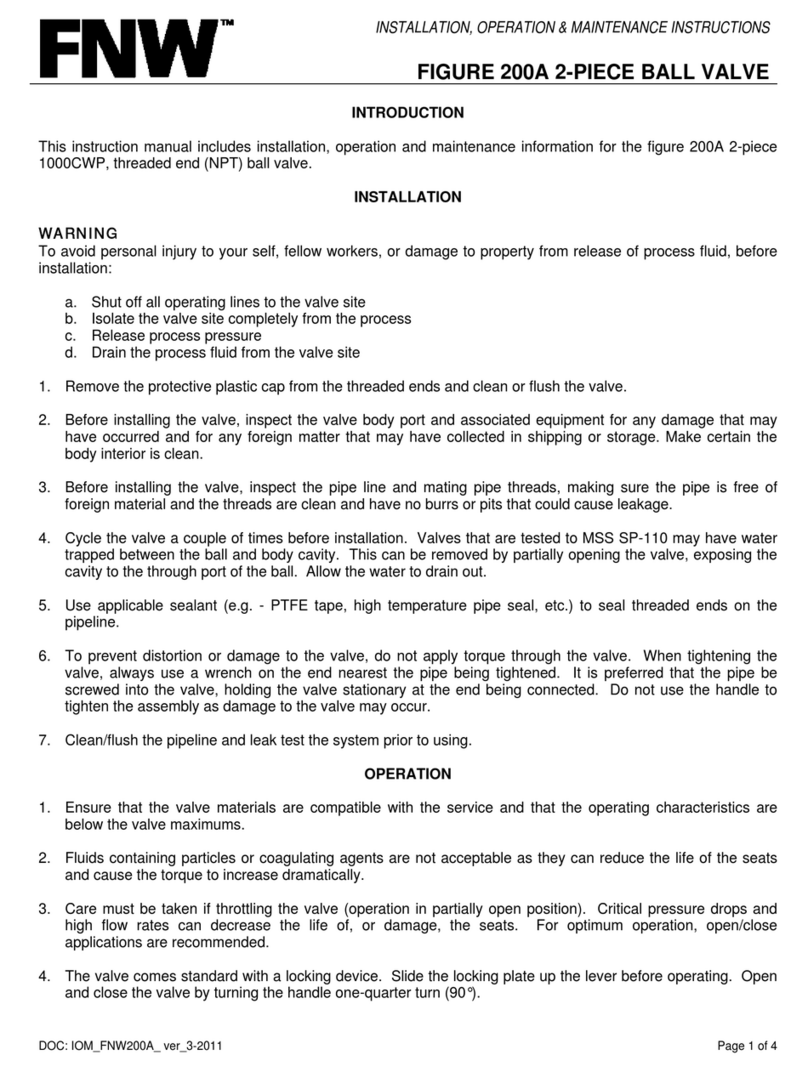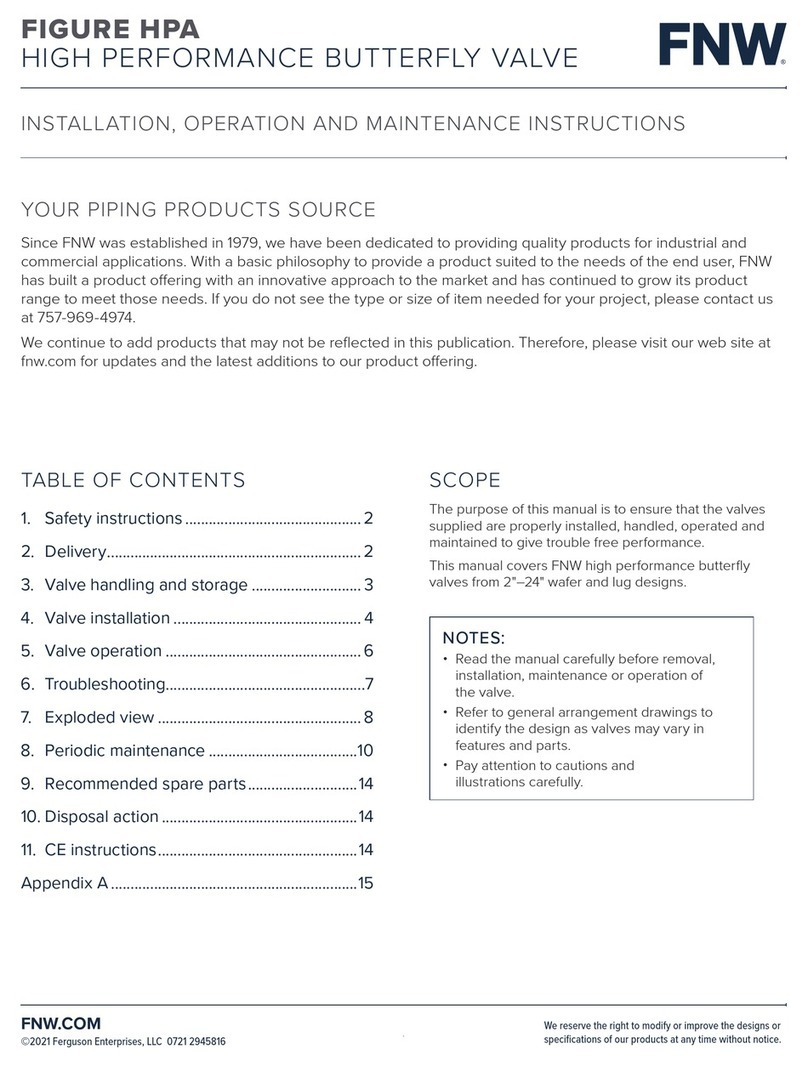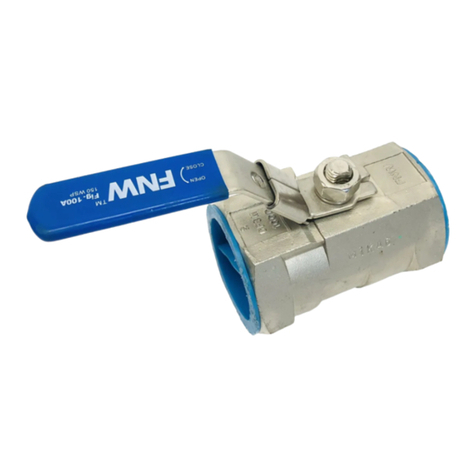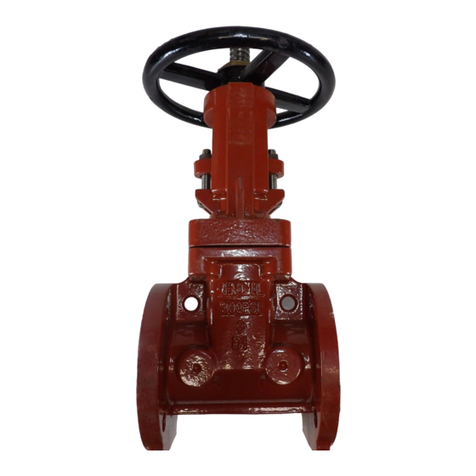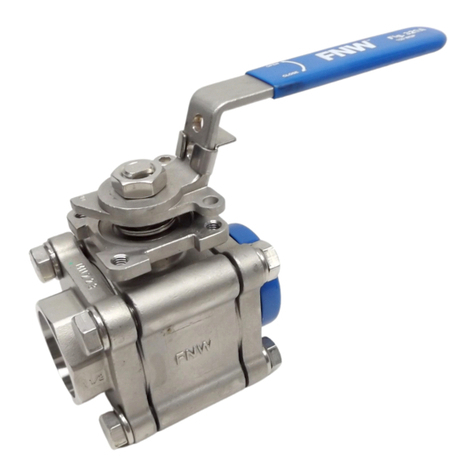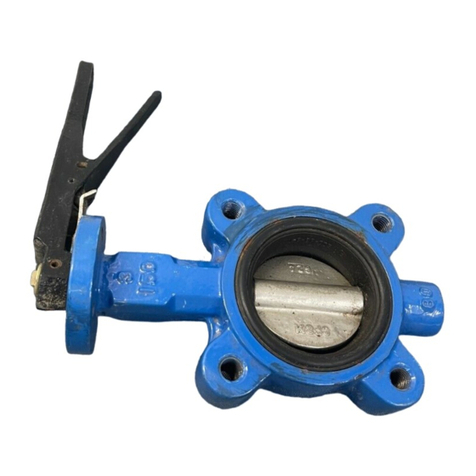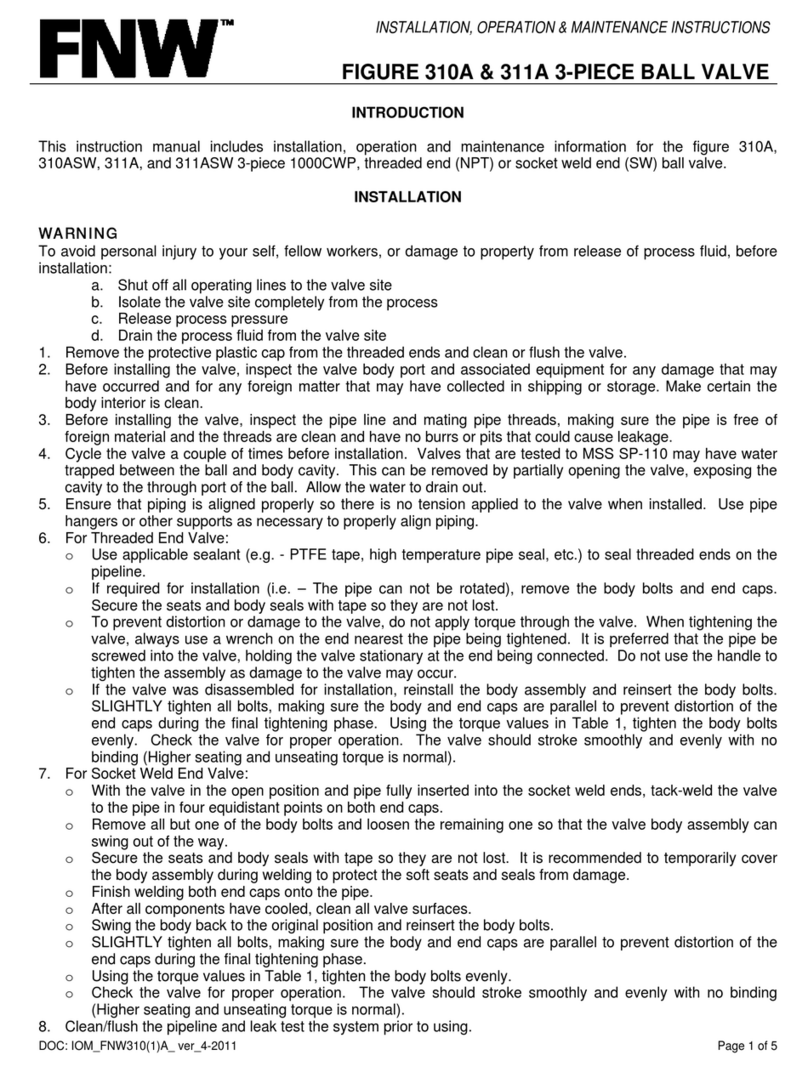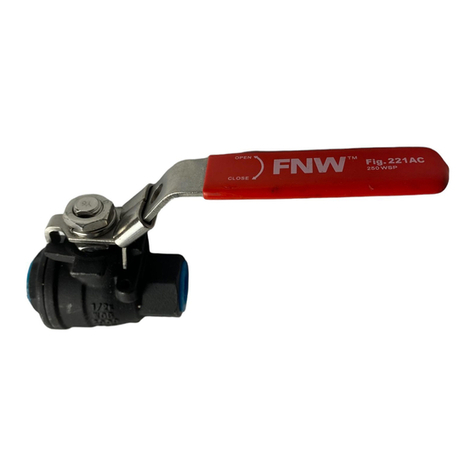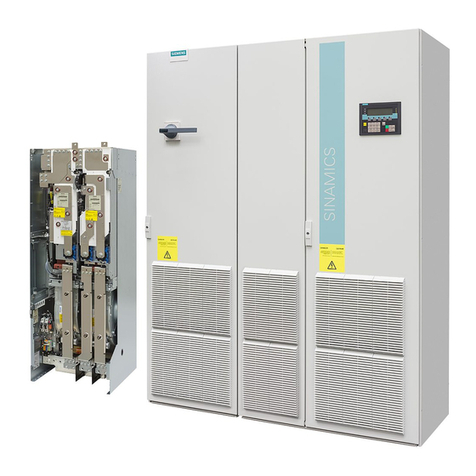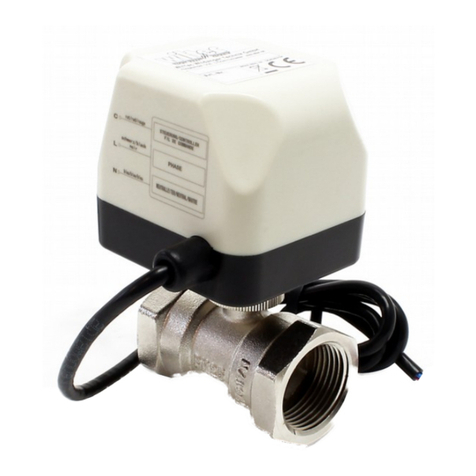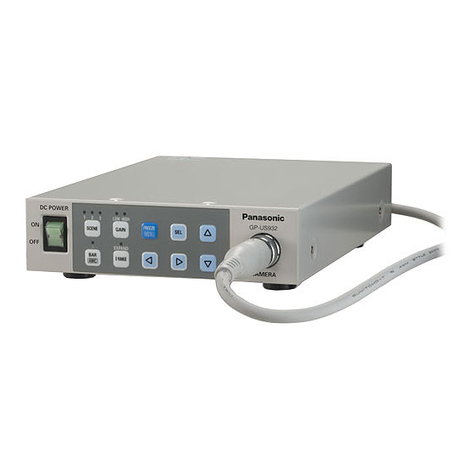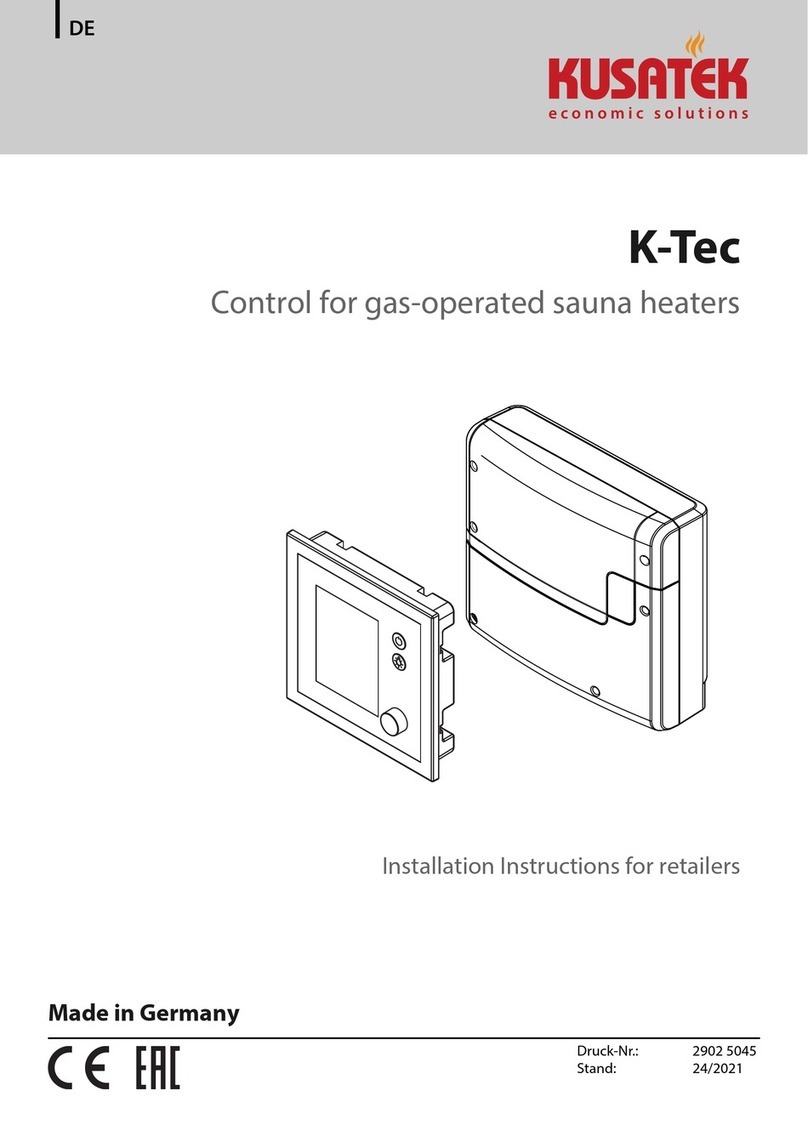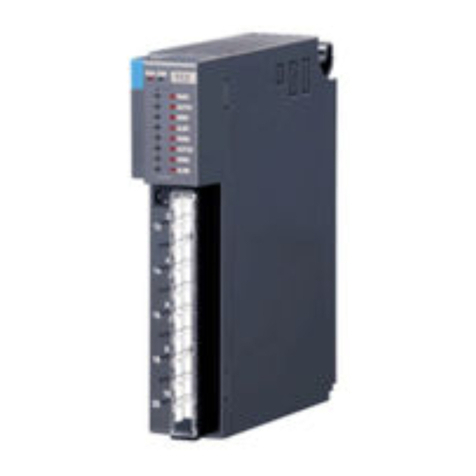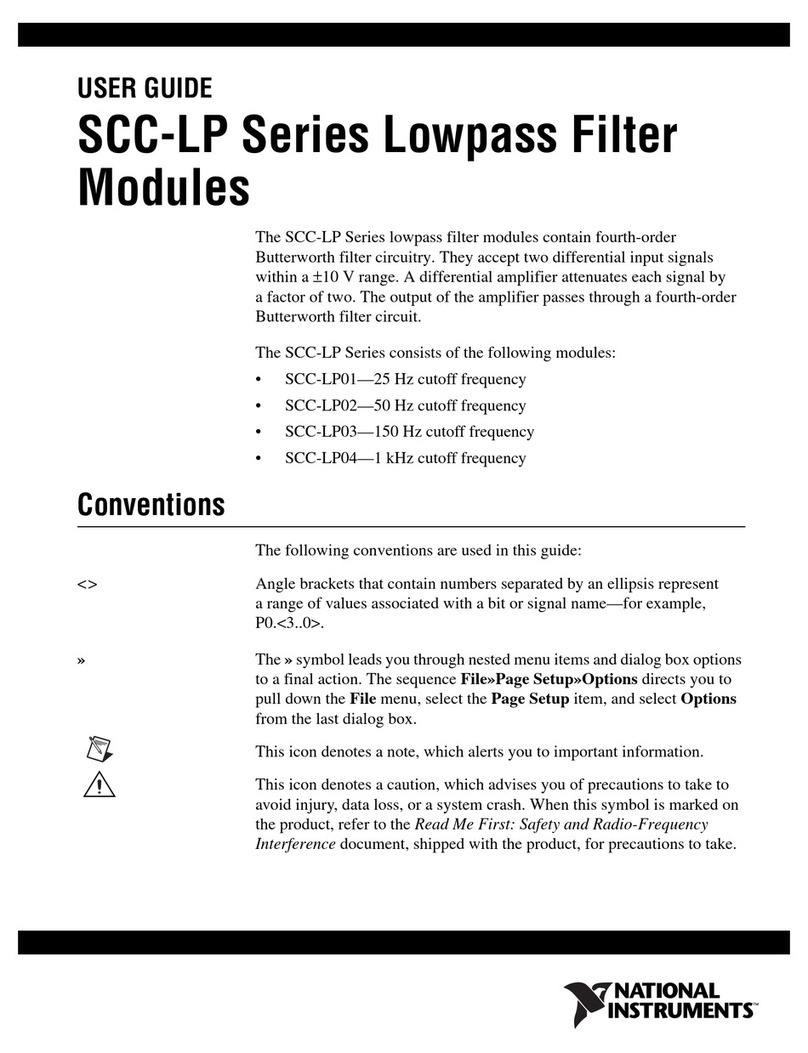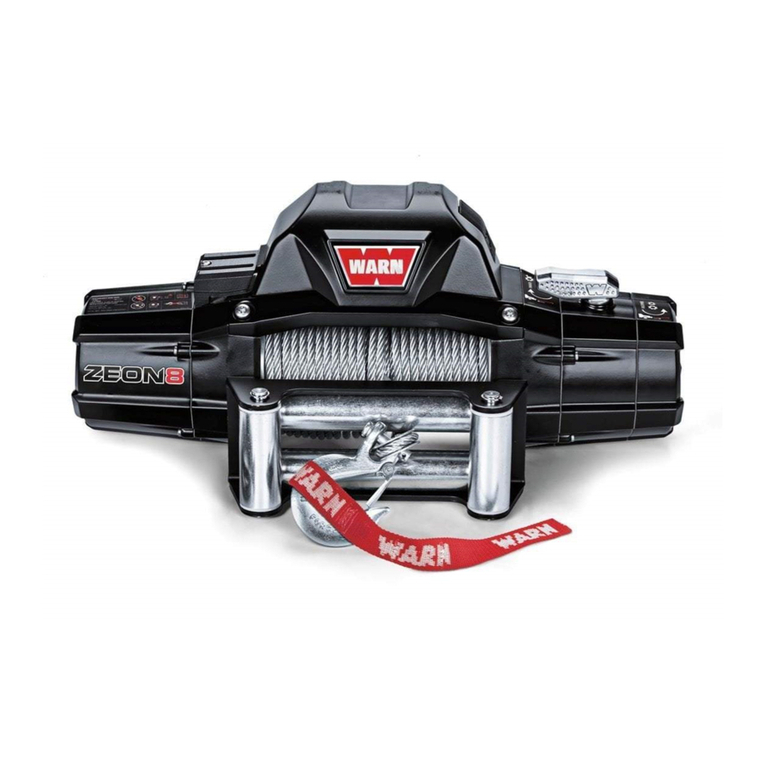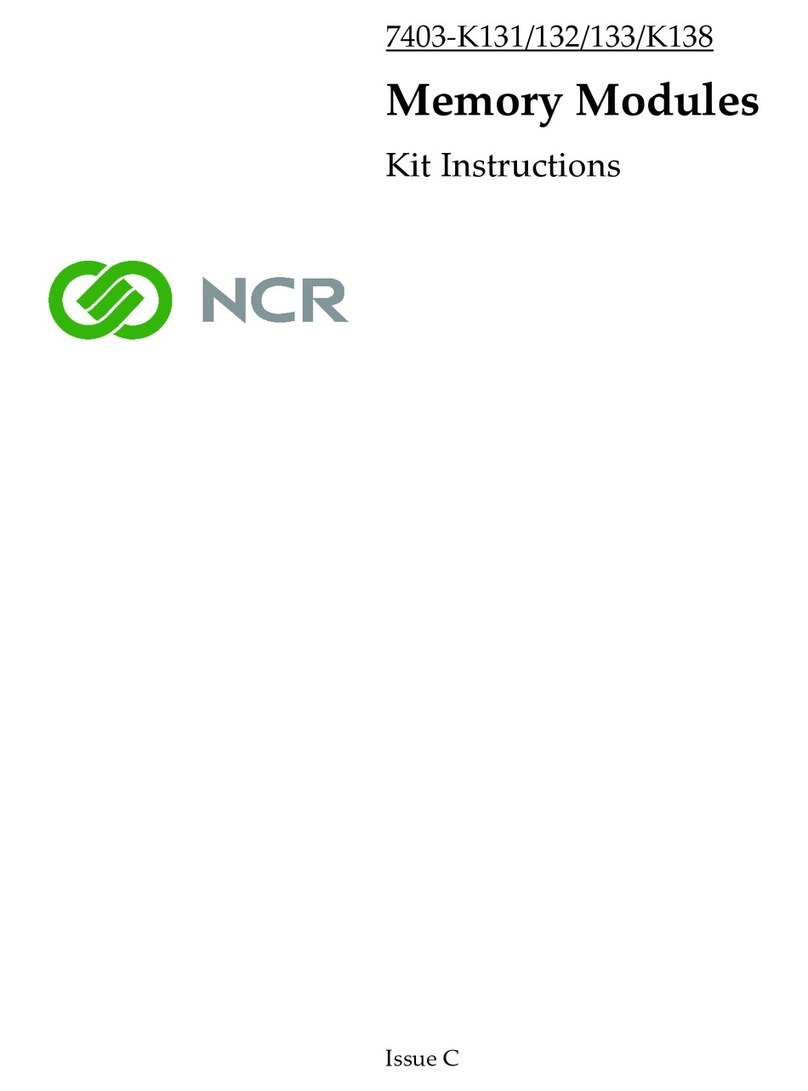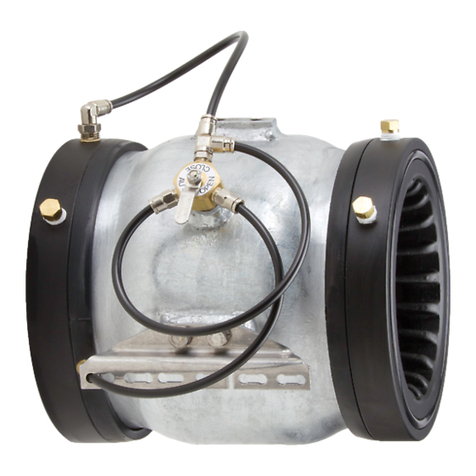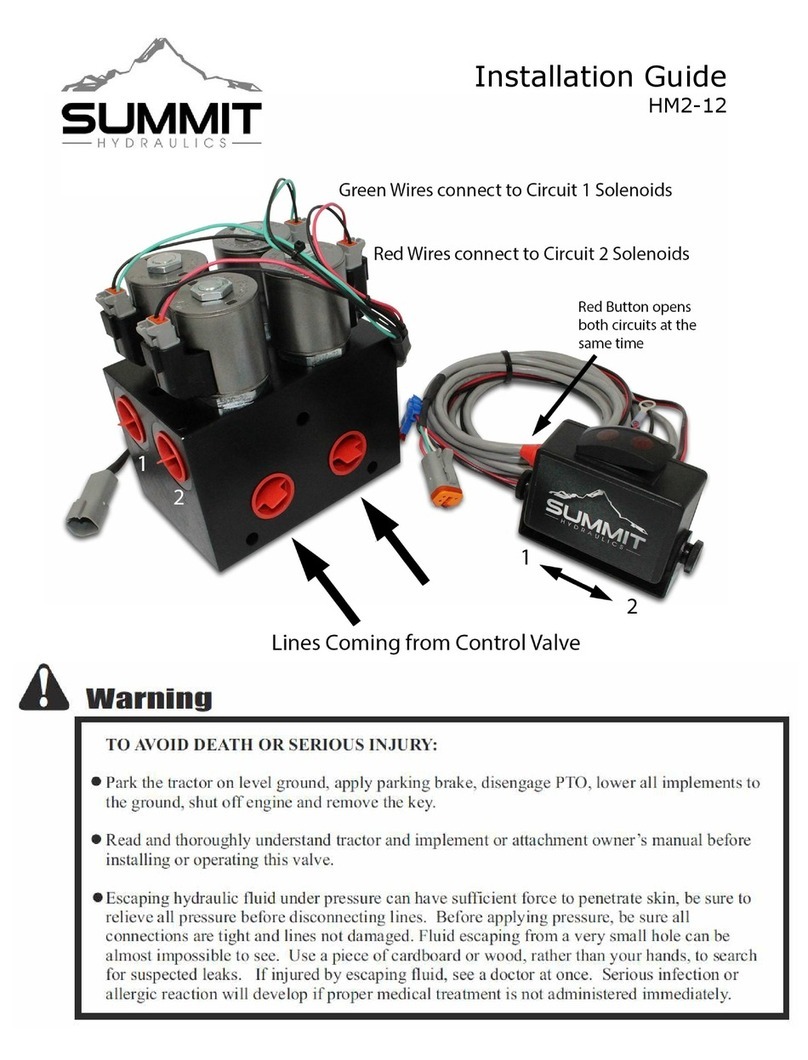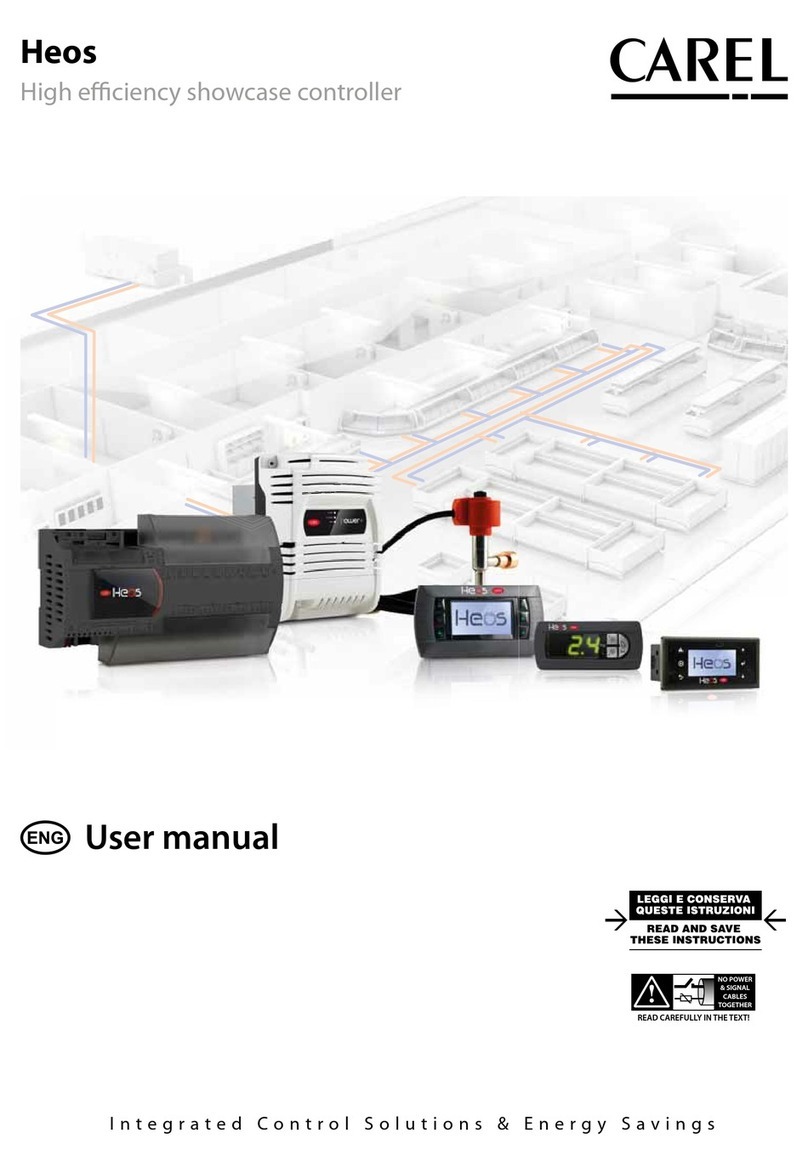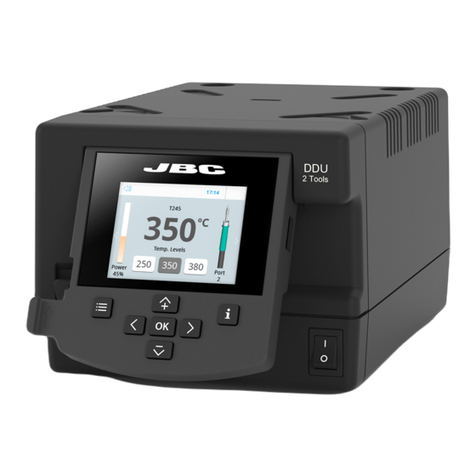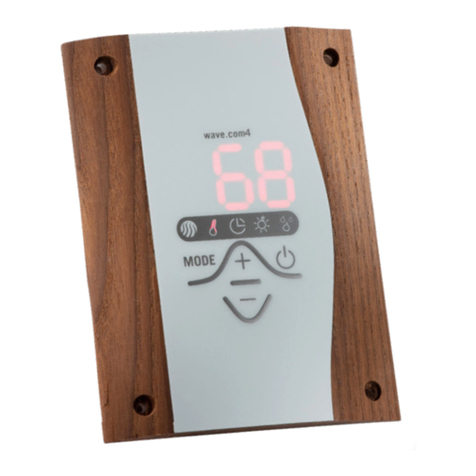FNW HPA Manual

FNW.COM
©2022 Ferguson Enterprises, LLC 0722 4239423
We reserve the right to modify or improve the designs or
specifications of our products at any time without notice.
HIGH PERFORMANCE BUTTERFLY VALVE
FIGURE HPA
1
INSTALLATION, OPERATION AND MAINTENANCE INSTRUCTIONS
TABLE OF CONTENTS
1. Safety Instructions ............................................. 2
2. Delivery................................................................. 2
3. Valve Handling and Storage ........................... 3
4. Valve Installation ................................................ 4
5. Valve Operation.................................................. 6
6. Troubleshooting...................................................7
7. Exploded View.................................................... 8
8. Periodic Maintenance ......................................10
9. Recommended Spare Parts ...........................14
10. Disposal Action..................................................14
11. CE Instructions...................................................14
12. Appendix A .........................................................15
References..........................................................15
Tightening Sequence.......................................15
Recommended Torque....................................16
Bolting Dimensions.................................... 17–24
YOUR PIPING PRODUCTS SOURCE
Since FNW was established in 1979, we have been dedicated to providing quality products for industrial and
commercial applications. With a basic philosophy to provide a product suited to the needs of the end user, FNW
has built a product oering with an innovative approach to the market and has continued to grow its product
range to meet those needs. If you do not see the type or size of item needed for your project, please contact us
at 757-969-4974.
We continue to add products that may not be reflected in this publication. Please visit our website at fnw.com for
updates and the latest additions to our product oering.
SCOPE
The purpose of this manual is to ensure that the valves
supplied are properly installed, handled, operated and
maintained to give trouble-free performance.
This manual covers FNW high performance butterfly
valves from 2"–24" wafer and lug designs.
NOTES:
• Read the manual carefully before removal,
installation, maintenance or operation of
the valve.
• Refer to general arrangement drawings to
identify the design, as valves may vary in
features and parts.
• Pay attention to warnings and
illustrationscarefully.

FNW.COM
©2022 Ferguson Enterprises, LLC 0722 4239423
We reserve the right to modify or improve the designs or
specifications of our products at any time without notice.
HIGH PERFORMANCE BUTTERFLY VALVE
FIGURE HPA
2
Fig. Sample nameplate
PROD. CODE:-
REF NO:-
SIZE (NPS):-
ASME BODY PR. CLASS:-
PR. AT 38°C (100°F):-
Pmax (Tallow):-
BODY/DISC:-
STEM/SEAT:-
SR. NO:-
TAG NO:-
MFG DATE:-
CHECK:
• Tag numbers and details of valves upon receipt.
• Valves thoroughly for any damages that may have occurred during transit.
• Condition of end protectors.
In case of any discrepancies in the above-mentioned details or discovery of any kind of damage to the valve
upon delivery, please contact a FNW or manufacturerrepresentative.
2. DELIVERY
2.1 HPA Butterfly Valves are shipped with the disc in
fully closed position for the protection of the disc.
2.2 The valve specification details are marked on the
nameplate and valve body. A typical nameplate is
shown in Fig. 1.
2.3 The valves are delivered with end protecting caps
to avoid damage of internals and flange facing.
2.4 Handwheels for gear operated valves are
packed separately in the same packing box. The
pin is attached to the gear box shaft using an
adhesive tape.
2.5 For lever operated valves, the hand lever is
either assembled with the valve or shipped loose
depending on size.
1. SAFETY INSTRUCTIONS
Do not exceed the valve pressure-temperature
ratinglimitations. Exceeding the pressure-temperature
rating limitations marked on the valve may result in
significant damage to the valve and personal injury. Users
of these valves should ensure that the process design
pressure-temperature is less than or equal to the rated
pressure-temperature of the valves. If required, user
should incorporate appropriate limiting and monitoring
devices in the system for safe operation of the valve.
Use the valve for specified application only. User should
ensure that the valve is used only for the specified
application as agreed upon by the manufacturer and
the purchaser.
Follow the safety rules and regulations. User must be
aware of all the safety rules and regulations related to the
environment in which the valve is to be used.
Do not disassemble the valve or remove it from the
pipeline while the valve is pressurized. Disassembling
or removing a pressurized valve will result in uncontrolled
pressure release. Always isolate the relevant part of the
pipeline, release the pressure from the valve and remove
the media before moving the valve. Be aware of the type
of media involved. Protect people and the environment
from any harmful or poisonous substances. Make
sure that no dust or dirt can enter the pipeline during
valve maintenance.
Beware of disc movement and keep hands, tools and
other foreign objects out of the valve opening while
valve is actuated. Disconnect supply sources and make
sure valve actuation is in the “fail safe” state before
performing any work. Failure to do so may cause damage
and/or personal injury.

FNW.COM
©2022 Ferguson Enterprises, LLC 0722 4239423
We reserve the right to modify or improve the designs or
specifications of our products at any time without notice.
HIGH PERFORMANCE BUTTERFLY VALVE
FIGURE HPA
3
3. VALVE HANDLING AND STORAGE
3.1 HANDLING
3.1.1 Valve shall be properly supported and secured
before moving to prevent possible damage to
valve and property or harm to personnel.
3.1.2 Do not drag the valve on the ground during
transportation. A minimum height of one foot
from the ground is recommended while moving
the valve.
3.1.3 When handling the valve or the valve package,
bear in mind its weight. Never lift the valve or
valve package near the actuator or operator.
Do not sling crane straps or wires around any
automation components such as the lever, gear,
actuator, accessories and tubing to avoid any
load acting on it. Place the lifting device securely
around the valve body while handling the valve.
Refer to Fig. 2.
3.1.4 Valve shall not be handled with the handwheel
fixed to the gear unit. The handwheel shall be
dismantled before handling and transporting of
the valve.
3.1.5 Extreme care shall be taken to ensure that the
stem and automation components (such as the
lever, gear, actuator, accessories, and tubing) are
not bent, pinched or damaged during handling.
3.2 STORAGE
3.2.1 Clean the valves and ensure that end protectors
are in place before the valves are stored, as dry
contaminants like dust, sand, grit, etc. can scratch
the metal seating surfaces and the soft inserts,
leading to leakages on full pressure operation.
3.2.2 Valves shall be stored in an indoor/covered area
which is dust free, dry and well-ventilated to
protect from rain and storm. Refer to Fig. 3.
3.2.3 The valve shall always be maintained in an
environment with temperature higher than the dew
point with a preferred range from 84.2°F (29°C)
to 104°F (40°C) at the storage location to avoid
collection of water droplets on the valve surface.
3.2.4 Do not keep the valve directly on the floor. Valve
shall be placed on a wooden pallet at least 6" from
the floor.
3.2.5 Care should be exercised not to damage the
extended portions of the stem housing and
automation components during storage.
3.2.6 Do not apply tar, grease or any other foreign
materials inside the valve aside from proper
lubrication, as it could impair valve performance.
CORRECT WRONG
Fig. Lifting the valve
CAUTION:
• Improper storage and/or handling may cause valve assembly damage or deformation, which will aect
performance of the valve. Disc/seat damage can impair sealing capabilities and increase operation torque.
• Valve must not be stored for more than 2years.
• When valves are stored for a long time, open and close the valve once every 3months.
DO NOT:
• Store the valve outdoors.
• Store valve without end protectors.
• Place or drag the valve on the floor.
• Place and/or handle valve in positions that may
damage the valve or its accessories.
Fig. Properly covered storage

FNW.COM
©2022 Ferguson Enterprises, LLC 0722 4239423
We reserve the right to modify or improve the designs or
specifications of our products at any time without notice.
HIGH PERFORMANCE BUTTERFLY VALVE
FIGURE HPA
4
4.2 FLANGED ENDS
Refer to Appendix section A1 for applicable standards.
4.2.1 The valve shall be in the closed position during
installation process, except in case of fail OPEN
valves; if this occurs, additional care shall be taken
not to damage the disc surface with any debris.
4.2.2 The pipes must be properly aligned and
provisions made to minimize stresses from
thermal expansion. Always review pipe
manufacturer's recommendations.
4.2.3 In cases of pipes with long overhangs, adequate
support shall be provided at the flange ends of
the pipe to avoid bending of pipes due to weight
of the valve. Refer to Fig. 5.
4.2.4 Align the bolt holes of the valve end flange and
pipe flange.
4.2.5 Insert gasket and tighten the bolts. Flange bolts
shall be tightened evenly using a torque wrench in
cross rotation to prevent damage to flanges.
Fig. Support to the valve (picture for reference).
4. VALVE INSTALLATION
4.1 GENERAL
4.1.1 Carefully unpack the valve and check for tags or
identification plates, etc. If the nameplates and/
or tags are lost or destroyed during shipment or
storage, or if it is not legible, contact an FNW or
manufacturer representative for assistance before
installing the valve.
4.1.2 Check valve for any damage and check condition
of end protectors. Upon discovery of any damage,
contact an FNW or manufacturer representative
prior to installation.
4.1.3 Look for any special warning tags or plates
attached to the valve; if there are any, take
appropriate action.
4.1.4 HPA Series butterfly valves are recommended to
mount the valve in the preferred flow.
4.1.5 Never install the valve with the actuator on the
under side of the pipeline. Refer to Fig. 4.
4.1.6 It is recommended to remove all foreign particles
from the pipeline by flushing it with a suitable
fluid. Corrosion inhibitors shall be added to the
flushing medium to prevent any corrosion from
trapped fluids.
4.1.7 Remove the valve end protectors and protective
sheath within the flow bore of the valve.
4.1.8 After removal of end protectors, thoroughly clean
valve ports and cavities and ensure the flange
gasket faces are free from dust and debris.
4.1.9 Gasket contact faces of the valve and pipe flanges
shall be inspected thoroughly for scratches or
any defects.
4.1.10 After cleaning, operate the valve for at least two
complete cycles before installing.
Fig. Incorrect mounting position (picture for reference).
CAUTION:
• If valve is not cleaned or if cleaning is done
only after valve installation, valve cavities
may form a natural trap in the piping
system, and any impurities not dissolved or
washed out by the flushing fluid/line fluid
may settle in such cavities and adversely
aect valve performance.
• Only properly qualified personnel must do
the installation.

FNW.COM
©2022 Ferguson Enterprises, LLC 0722 4239423
We reserve the right to modify or improve the designs or
specifications of our products at any time without notice.
HIGH PERFORMANCE BUTTERFLY VALVE
FIGURE HPA
5
4.2.6 For bolting torque, reference A3.
4.2.7 The fastener length is not the same for both sides
in all cases and may vary for the retainer side and
stem side. Refer to the recommended length in
the table. Appendix, section A4.
4.2.8 Tapped holes near the stem axis may have blind
holes. Appropriate fastener length shall be used as
recommended in the table. Appendix, section A4.
4.2.9 Fasteners shall be lubricated for ease
of installation.
CAUTION:
The improper alignment of the pipe and
the valve during installation can lead to
unbalanced tightening of the flanges which
may cause excessive stress on the bolts and
lead to leakage. Ensure all nuts, flanges and
cables are properly fastened.
4.3 CLEANING AND TESTING
4.3.1 Clean the pipeline by flushing the system with a
compatible liquid to remove any contaminants
that may be present in order to prevent
scratches forming on the sealing surfaces from
these contaminants.
4.3.2 While testing the pipeline, ensure that the media
is clean and free from sand, dirt, pebbles, etc. Add
corrosion inhibitors to the testing media to avoid
any internal corrosion of the valve.
4.3.3 Operate the valve once to check for
smooth operation.
4.3.4 If no obvious problems are observed, test
pressure according to applicable standard may
be applied and leak tightness and operability may
be checked.
CAUTION:
• Faulty installation may lead to valve and/or
pipeline damage.
• Avoid contact with the valve closure
element during cycling.
• During shell test, the valve shall be in
the partially open position to prevent the
seat from being subjected to the shell
testpressure.
CHECK:
• Installation of the valve as per the piping drawing.
• End protectors are not removed during storage. They are only to be removed before valve installation.
• General pipe and valve cleanliness.
• Face-to-face and/or end-to-end dimensions.
• Conformance of piping connectors with relevant standards or norms.
• Parallelism of piping flanges or piping connectors.
• Alignment of the bolt holes of the pipe and valve flanges.
• Availability of enough space for the valve and its accessories for easy operation.
• The suitability and eciency of valve and accessories support.

FNW.COM
©2022 Ferguson Enterprises, LLC 0722 4239423
We reserve the right to modify or improve the designs or
specifications of our products at any time without notice.
HIGH PERFORMANCE BUTTERFLY VALVE
FIGURE HPA
6
CAUTION:
• HPA series butterfly valves are quarter-turn valves (i.e., 90° rotation of the disc makes the valve either fully
opened or fully closed).
• Butterfly valves employed for throttling duties shall be limited to a max pressure drop of 20% of the inlet
pressure at max open position.
• Recommended controls angles are between 25°–70°. Preferred angles for control valve sizing is 60°–65° open.
• Valve is to be operated for maximum 5 m/s velocity for liquids and 100 m/s for gaseousfluids.
CAUTION:
• Keep hands, tools and other foreign objects out of the internals of valves. A remotely actuated valve might
close without warning causing physical damage and personal injury. Disconnect valve from supply sources
and make sure valve automation is in fail safe state before performing any maintenance work.
• In cases when valves are supplied as bare stem as per customer requirements, please ensure that the
connecting devices for operator do not exert any axial or radial loads on the valve stem as it may lead
to bending of the stem and excessive loading on the ball. Ensure the end cover of actuator position is
interchanging to valve position when installing/mounting actuator to valve. Brackets, mounting hardware of
product, are designed to support the weight of the automation assembly. Do not apply additional weight as
this may result in leakage and performance failure of the valve assembly, causing possible seat damage and
increase operation torque.
• Bare stem position indicator: When valve is closed, the position of the stem double-D or keyway is
perpendicular to pipeline; when valve is open, the position of the stem double-D or keyway is parallel
topipeline.
5. VALVE OPERATION
5.1 GENERAL
5.1.1 Operational life of the valve can be maximized
if the valve is used within the rated range in
accordance with pressure, temperature and
corrosion data.
5.1.2 For arrangement of the internal construction, refer
to the Exploded View of the valve.
5.2 ACTUATION
General instructions given below. Refer to separate
operator IOMs for further details.
5.2.1 Mechanism: The stem of the valve is rotated
by using a wrench/handle/lever for small-sized
valves and by a gear unit in case of larger valves.
Electric/hydraulic/pneumatic actuators can also be
used for actuation.
5.2.2 Wrench/handle/lever operated valves shall be
opened or closed by turning the operator by a
quarter turn (90°).
• Valve in open position: the operator is in parallel
(in-line) with the valve or pipeline.
• Valve in closed position: the operator is
perpendicular (crossed) with the valve
or pipeline.
5.2.3 Gear units are provided on valves for easier
operation. Usually clockwise operation is for
closing and anti-clockwise is for opening of the
valve. The position of the valve can be noted by
the position indicator provided on top of the gear
unit. The number of turns will depend on the gear
unit used. Gear units are of the self-locking type
(i.e., the line fluid will not make the valve rotate)
and the gear units have factory-set mechanical
stopper screws for setting the exact opening and
closing positions.
Refer to section 8.4 for how to adjust the
mechanical stoppers, if required.
• Worm gear operators are packed with grease.
Normally the grease is suitable for -4°F (-20°C) to
176°F (80°C). For other applications, consult the
nearest FNW or manufacturer representative.

FNW.COM
©2022 Ferguson Enterprises, LLC 0722 4239423
We reserve the right to modify or improve the designs or
specifications of our products at any time without notice.
HIGH PERFORMANCE BUTTERFLY VALVE
FIGURE HPA
7
CAUTION:
• Apply gradual force on the handwheel
of the gear operator and do not apply
sudden impacts.
• Do not apply extra leverage (using
pipe/bar) when the end stops of the gear
operator reach its extremeposition.
CAUTION:
• Use the valve only for applications for
which it is designed and recommended for
to avoid unexpected failure of the valve.
• Suspended particles in the line fluid may
damage the soft components in valve.
DO:
• Ensure that the valves in the pipeline
aected by a fire are replaced as soon as
possible for satisfactory performance.
Symptom Possible Cause Corrective Action
Stem packaging leaks
from top
1. Gland bolts loose.
2. Packaging damaged or missing.
3. Seal misaligned.
1. Tighten the bolts.
2. Replace packaging (shut down first).
3. Replace and aligned it correctly.
Body gasket leaking 1. Body bolts loose.
2. Body gasket damaged.
1. Tighten the body bolts.
2. Remove gasket.
Valve leaks at
closedposition
1. Seat is worn or damaged.
2. Disc edge is worn or damaged.
1. Replace seat as described in disassembly and assembly.
2. Replace the disc. (Consult factory for potential
applicationproblem.)
• Grease should be changed as follows: If operated
frequently, after approximately 3 years; if operated
rarely, after approximately 5 years.
• Recommended Greases: Servo gem EP2 (Extreme
Pressure), Mobilux EP2, Oline EP2, Chevron EP2.
5.2.4 Electric actuator, which gives a multi-turn output,
is fitted on the gear unit. The actuator drives the
gear unit which in turn rotates the stem. Electrically
actuated valves are provided with declutching
mechanism for manual operation of the valve. For
electric actuators, FNW or manufacturer recommends
to strictly adhere to the instructions as per actuator
manufacturer’s manual.
5.2.5 Pneumatic or hydraulic actuator is fitted directly
on the valve without a separate gear unit, unless
a separate manual override is requested, as these
actuators have built-in quarter turn mechanisms. For
these actuators, FNW or manufacturer recommends
to strictly adhere to the instructions as per actuator
manufacturer’s manual.
5.3 FIRE SAFETY FIRE SAFE DESIGN
In the event of fire, the soft seals may burn out. In this
condition, the line pressure pushes the metal seat ring
against the disc. The disc makes contact with the metal seat
ring to provide a fire-safe metal sealing. Valves are tested to
meet the fire safety requirements of API 607.
Table Troubleshooting check list
6. TROUBLESHOOTING
The table below lists some common problems that may be encountered with double eccentric butterfly valves, the probable
causes and the recommended remedy for the problems. However, judgment and experience must be applied when working
on the valves in the actual field according to on site conditions.

FNW.COM
©2022 Ferguson Enterprises, LLC 0722 4239423
We reserve the right to modify or improve the designs or
specifications of our products at any time without notice.
HIGH PERFORMANCE BUTTERFLY VALVE
FIGURE HPA
8
Item Description
Body
Disc
Seat (Soft)
Seat (Fire Safe)
Stem (Soft Seat)
Stem (Fire Seat)
Seat Retaining Ring
Disc Spacer
Bearing (Soft Seat)
Bearing (Fire Safe)
Wedge Pin
Retainer Screw
Packing Spacer
Item Description
Gland Packing (Soft Seat)
Gland Packing (Fire Safe)
Stem Retainer
Gland Flange
Stud
Belleville Spring
Hex Nut
Cover Gasket (Soft Seat)
Cover Gasket (Fire Safe)
Bottom Cover
Punch Washer
Hex Hd Screw
Seat Gasket (Fire Safe)
7. EXPLODED VIEW
A: 2"–12" (Lug/Wafer)

FNW.COM
©2022 Ferguson Enterprises, LLC 0722 4239423
We reserve the right to modify or improve the designs or
specifications of our products at any time without notice.
HIGH PERFORMANCE BUTTERFLY VALVE
FIGURE HPA
9
Item Description
Body
Disc
Seat (Soft)
Seat (Fire Safe)
Stem (Soft Seat)
Stem (Fire Seat)
Seat Retaining Ring
Disc Spacer
Bearing (Soft Seat)
Wedge Pin
Retainer Screw
Packing Spacer
Gland Packing (Soft Seat)
Gland Packing (Fire Safe)
Item Description
Stem Retainer
Gland Flange
Stud
Belleville Spring
Hex Nut
Cover Gasket (Soft Seat)
Cover Gasket (Fire Seat)
Bottom Cover
Punch Washer
Hex Hd Screw
Seat Gasket (Fire Safe)
Mounting Plate
Counter Sunk Screw
B: 14"–24" (Lug/Wafer)

FNW.COM
©2022 Ferguson Enterprises, LLC 0722 4239423
We reserve the right to modify or improve the designs or
specifications of our products at any time without notice.
HIGH PERFORMANCE BUTTERFLY VALVE
FIGURE HPA
10
CAUTION:
• For your safety, it is important that these precautions be taken before removal of the valve from the line or
before disassembly.
• De-pressurize the line before removing the bolting.
• Wear protective clothing and equipment appropriate for the line fluid.
• Ensure cavity pressure is relieved.
• Cycle the valve several times before disassembly to relieve pressure completely.
• Disconnect valve from supply sources and make sure valve actuation is in fail safe state before performing
any maintenance work.
8. PERIODIC MAINTENANCE
8.1 GENERAL
8.1.1 For extended valve life and better operability,
FNW recommends periodic inspection and
maintenance of the valves as per the procedure
explained below. To avoid valve failure during
operation, all valves in a process plant should
be periodically inspected thoroughly to detect
the wear of disc, seats, seals and even body. It
is recommended that, on such occasions, seats,
seals and bushings should be replaced.
8.1.2 The type of process, fluids involved, working
conditions and location of the valves in the
process plants will determine the frequency of
periodic inspection/maintenance to be made at
the time of partial or total shutdown of the plant.
Preventive maintenance is essential as failure
to do so may cause an emergency shutdown of
the plant.
8.1.3 Use genuine FNW spare parts only for
maintenance and replacements. Refer to
Section 9.
8.1.4 Studs and nuts fixing pipeline flanges and valves
are to be properly tightened and in position, if
found loose.
8.1.5 Gland nuts and bolts are to be inspected and
ensure that they are intact and not loosened
during service. Properly tighten the nuts by
means of spanner or wrench if found loose. Over
tightening of gland nut may damage the gland
seal packing and stem.
8.1.6 Once the valve is repaired, it should undergo a
complete set of tests to make sure that the valve is
adequate for required working conditions. Hydro/
Pneumatic tests should be carried out as per the
specifications relevant to the valve (Refer to GAD
or specifications related to order).
8.2 OPERABILITY AND TORQUE
8.2.1 Check for ease of operation of the valve.
8.3 STEM LEAKAGE
8.3.1 Any major leakage at the stem region can easily
be detected by checking for unexpected pressure
drops in the pipeline.
8.3.2 Minor leakage at the stem region may be
detected by using soap bubbles, after removing
the operator (actuator/gear/lever) unit.

FNW.COM
©2022 Ferguson Enterprises, LLC 0722 4239423
We reserve the right to modify or improve the designs or
specifications of our products at any time without notice.
HIGH PERFORMANCE BUTTERFLY VALVE
FIGURE HPA
11
CAUTION:
• If complete disassembly becomes necessary, replacement of seats and all seals is recommended.
• Once the valve is dismantled, the soft seals and gasket shall be changed. Make sure these parts are available
before dismantling of valve.
STOPPER BOLT ARRANGEMENT
Open position Close position
Adjust right bolt for open position
Adjust left bolt for close position
Lock nut/check nut
Lock washer intact with nut
Fig. Gear unit
8.4 GEAR STOPPER ADJUSTMENT PROCEDURE
8.4.1 Before changing the setting, ensure that the nut
locking washer is intact. If not intact, then only
proceed for resetting.
8.4.2 Loosen the lock nut by unlocking the nut washer.
Loosen left side bolt for one rotation. Rotate the
handwheel in the clockwise direction to close the
valve till it is stopped by the left side bolt.
8.4.3 The adjustment of the valve should be within ±5º
of mean position indicated by the indication plate.
8.4.4 Check valve leakage after adjustment. If valve is
found leaking again, repeat the procedure. If no
leakage is detected, then tighten the lock nut and
lock washer.
8.5 DISMANTLING PROCEDURE
8.5.1 Depressurize the line and open the valve to drain
the line.
8.5.2 Before removal from the line, cycle (open and
close) the valve to relieve residual pressure in the
body cavity.
8.5.3 Always fully close valve before removing from line
to avoid damage to disc.
8.5.4 Valves shall be slung and supported properly
before loosening flange bolts.
8.5.5 Place the valve on a platform or base and
transport to repair shop.
8.5.6 Before disassembly, cycle (open and close) the
valve several times to clear it of fluid; then flush
with water.
8.5.7 Valve shall be positioned vertically by resting
body side flange on clean ground surface
(preferably covered with rubber sheet).

FNW.COM
©2022 Ferguson Enterprises, LLC 0722 4239423
We reserve the right to modify or improve the designs or
specifications of our products at any time without notice.
HIGH PERFORMANCE BUTTERFLY VALVE
FIGURE HPA
12
CAUTION:
• Before removal of the valve, ensure that the line is fully depressurized.
• Improper handling may cause disc damage or deformation of stem or seat, which will aect sealing and
operational torque of the valve.
• Ensure that the disassembled components are kept in a clean place so that there will be no damage to
thecomponents.
8.5.8 Close the valve completely and remove operator
unit. Unscrew the lever lock bolt. Lift the lever by
pressing the latch of the lever out of the stem in
case of hand lever operated valve.
8.5.9 Disconnect supply source and remove the
pneumatic/electric/hydraulic actuator unit. Do
not remove a spring return actuator unless a
stop-screw is carrying spring force. Lift the gear
operator out of the stem by removing the bolts in
case of gear operated valve.
8.5.10 Secure body in a suitable clamping device without
damaging it.
8.5.11 Remove all retainer screws (9) and remove the
seat retainer (5).
8.5.12 Remove the seat (04) and replace it.
8.5.13 Remove counter sunk screws (24) and mounting
plate (23) on wafer and lug valve sizes above 12"
(see 7 B).
8.5.14 Remove the hex nuts (17) and Belleville washer (16)
from gland flange (17) and remove the gland flange
(14). The studs (15) do not have to be removed.
8.5.15 Remove the wedge pin welds by grinding or
machining o the welds and remove the wedge
pin (8).
8.5.16 Remove the stem retainer (snap ring) (13) and pull
the stem (3) out and remove the disc spacers (6),
gland (12) gland packing (11).
8.5.17 Gently pull the disc (2) from the body (1).
8.5.18 Remove the bottom flange bolt (21), spring
washers (20) and the bottom cover (19).
8.5.19 Remove the bottom gasket (18).
8.5.20 Remove top bearings (7) either from top of the
valve or the waterway.
8.5.21 Remove the bottom bearings (7).
8.6 REPAIR OF COMPONENTS
8.6.1 The metallic parts should be cleaned.
8.6.2 After cleaning components, examine for damaged
parts. Ensure that there are no scoring marks on
the metallic sealing surfaces. Check the seals for
scratches/wear.
8.6.3 Replace the damaged parts. The parts such
as seats and stem packing bearings are
recommended to be replaced with new ones
whenever the valve is disassembled.
8.7 ASSEMBLY PROCEDURE
8.7.1 Inspect and clean all parts to make sure they
are free of dust, grit or other material. A new
set of gasket and seals shall be used once
the valve is disassembled. Refer to Section 9
for recommended spare parts. Replace any
damaged parts.
8.7.2 Before assembly, visually inspect all the valve
components for damage. Look for damage to the
seating areas on the disc and check parts as per
bill of material.
8.7.3 Apply rust preventative oil to parts, wherever
applicable (i.e., body and disc stem bore in case of
CS material).
8.7.4 Place the body (1) on a clean work surface. Install
the bearings (7) with the help of mandrill into
the upper stem bore and lower stem bore of the
body. Refer to 9A, 9B, 9C for quantity of bearings
required for each construction.
8.7.5 Place the cover gasket (18) from bottom side.
8.7.6 Assemble bottom cover (19) and fasten the bolts
(21) with spring washers (20) of bottom cover.
8.7.7 For smooth assembly of the stem (3) into the disc
(2), it may be necessary to coat the stem (3) and
disc bore lightly with a lubricant compatible with
the media to be handled by the valve.

FNW.COM
©2022 Ferguson Enterprises, LLC 0722 4239423
We reserve the right to modify or improve the designs or
specifications of our products at any time without notice.
HIGH PERFORMANCE BUTTERFLY VALVE
FIGURE HPA
13
SPOT WELD HAS TO BE DONE
AFTER VALVE TESTING
(FIRST WELD IS MADE ON THIS
SIDE)
STEM
WEDGE PIN
Wedge pin
Stem
Spot weld has to be done after valve testing.
(First weld is made on this side)
Fig.
8.7.8 Slide the stem (3) through the top bearing (08) and
engage the top disc spacer (6) toward the bonnet
when applicable, place the disc (2) and slide the
stem (3) through disc stem bore. Place the lower
disc spacer (6) and push the stem through lower
bearing (7) into the body (1).
8.7.9 Insert the wedge pins (8) into disc holes for wedge
pin. Take care that pin flat surface matches to stem
flat surface and drive them into place. When pins
are correctly installed, the drive shaft will be as
shown in Fig. 7. Cycle the disc 4 to 5 times.
8.7.10 Place the packing spacer (10) into stung box
region and insert the set of gland packing (11) into
stung box above the packing spacer.
8.7.11 Place the gland (12) above the gland packing.
8.7.12 Install the stem retainer (snap ring) (13) on
the stem.
8.7.13 Fix the gland flange assembly (14) through stem,
insert the Belleville washers (16) and install nut (17),
tighten the nut (17) slowly till to the ISO top flange.
8.7.14 Install the Seat (3) into the Seat Retainer Ring (5).
8.7.15 Insert the seat and seat retainer assembly into the
body with disc in closed position. Apply anti-seize
grease for threading area. Insert the retainer bolts
in alternating sequence.
8.7.16 Cycle the disc and set disc in closed position.
8.7.17 Disc pins to be Tig spot welded after
leakage testing.
8.7.18 When the gear operator or hand lever or actuator
is reassembled on the valve, it may be necessary
to adjust gear operator or hand lever, or actuator
travel stops to ensure proper setting of the
butterfly in the open and closed position.
8.7.19 In case of gear operated valves, install bracket
and coupling and fix the gear unit. Ensure smooth
operation of valve during opening and closing.
8.7.20 In case of actuated valves, install the actuators
per manufacturer’s IOM. Ensure the indicator of
actuator position is matching to valve position
when installing and mounting actuator to valve.
8.7.21 After assembly, the valve shall be tested for
leakage across the seats and through the
stem seals.
8.8 PROCEDURE FOR GLAND
PACKINGREPLACEMENT
If further adjustment of the gland packing is inappropriate,
adopt the following procedure for its removal
and replacement.
8.8.1 Remove the operator (lever, gear box or actuator)
in accordance with section 8.5.
• Remove key from shaft (if applicable).
• Remove gland nuts.
• Remove gland, gland flange.
• Remove gland packings using a
pointed instrument.
8.8.2 Fit new gland packing rings.
8.8.3 Refit gland and gland flange.
8.8.4 Refit gland nuts, tighten evenly until heavy
resistance is felt. During this operation, turn
the stem to ensure that the packing is not
over tightened.
8.8.5 Refit the operator.

FNW.COM
©2022 Ferguson Enterprises, LLC 0722 4239423
We reserve the right to modify or improve the designs or
specifications of our products at any time without notice.
HIGH PERFORMANCE BUTTERFLY VALVE
FIGURE HPA
14
CAUTION:
• Improper handling may cause disc and seat damage or deformation of stem, which will aect sealing and
operational torque of the valve.
• Faulty installation may lead to valve and/or pipeline damage.
• Ensure that the soft parts are changed once they are removed from the valve.
• Avoid contact with the valve closure element during cycling.
CAUTION:
All equipment must be fitted only with
manufacturer’s original spare parts. When
ordering for spare parts, always convey the
following information: size of valve, sr. no. and
mfg. date which is available in the nameplate tag.
8.9.5 If the seat is tight, move the disc to open position,
and if still tight, gently drive the seat out of the
body using a smooth blunt instrument.
8.9.6 Ensure that all components are clean. Position the
disc in closed position.
8.9.7 Refit components by using steps in section 8.7.
8.9 PROCEDURE FOR SEAT REPLACEMENT
8.9.1 Remove the retainer ring as per procedure
described in section 8.5.
8.9.2 Remove retainer ring gasket in fire-safe seat
design. This is not applicable for soft seat.
8.9.3 Remove fire-safe seat/soft seat.
8.9.4 Remove body gasket (applicable for fire-
safe design).
10. DISPOSAL ACTION
10.1 DISPOSAL INSTRUCTIONS
10.1.1 Metallic components of product are to be cleaned
and recycled.
10.1.2 Foam, Rubber, Elastomer, Polymers and Plastics
components, along with packing materials, are to
be scrapped according to regional regulations in
which they are to be disposed.
10.1.3 Wooden boxes may be reused based on the
condition of the boxes, or they may be recycled.
11. CE INSTRUCTIONS
11.1 Each valve has a stainless-steel name plate fixed to
the body.
11.2 The nameplate is marked with details of figure
number, along with various other details, such as the
materials of construction, limiting temperatures and
pressure rating.
9. RECOMMENDED SPARE PARTS
9.1 Before the start of repair operations, we recommend
that one set of spares as given in Table 2 should
be available.
9.2 For normal operation (2 years), we recommend one
set of spares to be available at site.
Item No. Part Description
Seat ()
Bearing ()
Gland Packing ()
Stem Retainer ()
Bottom Gasket ()
6 Wedge Pin (8)
7Belleville Spring (16)
Seat Gasket ()
Table 2: Recommended spare parts list

FNW.COM
©2022 Ferguson Enterprises, LLC 0722 4239423
We reserve the right to modify or improve the designs or
specifications of our products at any time without notice.
HIGH PERFORMANCE BUTTERFLY VALVE
FIGURE HPA
15
APPENDIX A
TECHNICAL INFORMATION
A1. References
Design/pressure-temperature ratings
API 609 Butterfly Valves: Lug- and wafer-type
ASME B 16.34 Valves: flanged, threaded and welding ends
Face-to-face dimensions
API 609 Face-to-face and end-to-end dimensions of valves
End connections
ASME B16.5 Pipe flanges and flanged fittings (NPS 1/2 through NPS 24)
ASME B16.47 Large diameter steel flanges (NPS 26 through NPS 60)
Fire test
API 607 Fire test for soft seated quarter-turn valves
A2. Tightening sequence and torque
Tighten bolts evenly and diagonally opposite to each other or in a crisscross pattern.
Use the torque figures as shown in Table 3.
• Remove end caps/flange protectors from valves and ensure that the serrations on sealing faces are clean and
not damaged.
• The fastener length is not the same for both sides in all cases and may vary for the retainer side and stem side. Refer to
the recommended length in the table.
• Tapped holes near the stem axis may have blind holes. Appropriate fastener length shall be used as recommended in
the table.
• Fasteners shall be lubricated for ease of installation.
• Align the bolt holes of the valves with the bolt holes of the end flange.
• Place gasket between the flanges and hand tighten the fasteners.
• The fasteners shall be torqued in 3 sets, 50%, 75% and 100% of the recommended tightening torque in the sequence as
shown using the torque wrench.
Considerations
The flange drilling and dimensions as
per ASME B16.5
Nut thickness, if applicable, as per
ASME B18.2.2 (Heavy Hex) Lengths
rounded o to ¼"

FNW.COM
©2022 Ferguson Enterprises, LLC 0722 4239423
We reserve the right to modify or improve the designs or
specifications of our products at any time without notice.
HIGH PERFORMANCE BUTTERFLY VALVE
FIGURE HPA
16
Fastener Size Tightening Torque, Nm Tightening Torque, lbf.in Tightening Torque, lbf.ft
/ - UNC – – –
/ - UNC – – –
/ - UNC – –
- UN – – –
-/ - UN – – –
-/ - UN – – –
-/ - UN – – –
Table 3 Tightening torque values
A3. Recommended Tightening Torque
Fig. 8 Tightening Sequence

FNW.COM
©2022 Ferguson Enterprises, LLC 0722 4239423
We reserve the right to modify or improve the designs or
specifications of our products at any time without notice.
HIGH PERFORMANCE BUTTERFLY VALVE
FIGURE HPA
17
Through Screws Retainer Side
(blind tap near neck)
Stem Side
(blind tap near neck)
Heavy
Hex Nut
Valve Size Hex Head Screw Length Hex Head Screw Length Hex Head Screw Length
Inch DN Thread Inch mm Qty Inch mm Qty Inch mm Qty Qty
/ - UNC . N/A N/A N/A N/A N/A N/A
. / - UNC N/A N/A N/A N/A N/A N/A
/ - UNC . N/A N/A N/A N/A N/A N/A
/ - UNC . N/A N/A N/A N/A N/A N/A
/ - UNC . N/A N/A N/A N/A N/A N/A
/ - UNC N/A N/A N/A N/A N/A N/A
/ - UNC . N/A N/A N/A N/A N/A N/A
/ - UNC N/A N/A N/A N/A N/A N/A
/ - UNC . N/A N/A N/A N/A N/A N/A
- UNC . N/A N/A N/A N/A N/A N/A
- UNC N/A N/A N/A N/A N/A N/A
-/ - UN . N/A N/A N/A N/A N/A N/A
-/ - UN . . .
-/ - UN . .
W150 Hex head screws
Wafer Class 150 (with Hex head screws)

FNW.COM
©2022 Ferguson Enterprises, LLC 0722 4239423
We reserve the right to modify or improve the designs or
specifications of our products at any time without notice.
HIGH PERFORMANCE BUTTERFLY VALVE
FIGURE HPA
18
Through Studs Retainer Side
(blind tap near neck)
Stem Side
(blind tap near neck)
Heavy
Hex Nut
Valve Size Stud Length Stud Length Stud Length
Inch DN Thread Inch mm Qty Inch mm Qty Inch mm Qty Qty
/ - UNC . N/A N/A N/A N/A N/A N/A
. / - UNC . N/A N/A N/A N/A N/A N/A
/ - UNC N/A N/A N/A N/A N/A N/A
/ - UNC . N/A N/A N/A N/A N/A N/A
/ - UNC . N/A N/A N/A N/A N/A N/A
/ - UNC N/A N/A N/A N/A N/A N/A
/ - UNC . N/A N/A N/A N/A N/A N/A
/ - UNC N/A N/A N/A N/A N/A N/A
/ - UNC . N/A N/A N/A N/A N/A N/A
- UNC . N/A N/A N/A N/A N/A N/A
- UNC N/A N/A N/A N/A N/A N/A
-/ - UN N/A N/A N/A N/A N/A N/A
-/ - UN . .
-/ - UN . . .
W150 Studs
Wafer Class 150 (with studs)

FNW.COM
©2022 Ferguson Enterprises, LLC 0722 4239423
We reserve the right to modify or improve the designs or
specifications of our products at any time without notice.
HIGH PERFORMANCE BUTTERFLY VALVE
FIGURE HPA
19
Retainer Side Stem Side Retainer Side
(blind tap near neck)
Stem Side
(blind tap near neck)
Valve Size Hex Head Screw Length Hex Head Screw Length Hex Head Screw Length Hex Head Screw Length
Inch DN Thread Inch mm Qty Inch mm Qty Inch mm Qty Inch mm Qty
/ - UNC . . N/A N/A N/A N/A N/A N/A
. / - UNC . N/A N/A N/A N/A N/A N/A
/ - UNC . N/A N/A N/A N/A N/A N/A
/ - UNC N/A N/A N/A N/A N/A N/A
/ - UNC . N/A N/A N/A N/A N/A N/A
/ - UNC . N/A N/A N/A N/A N/A N/A
/ - UNC . . N/A N/A N/A N/A N/A N/A
/ - UNC . . N/A N/A N/A N/A N/A N/A
/ - UNC . . N/A N/A N/A N/A N/A N/A
- UNC N/A N/A N/A N/A N/A N/A
- UNC . . . .
-/ - UN . . N/A N/A N/A N/A N/A N/A
-/ - UN . .
-/ - UN . . .
L150 Hex head screws
Lugged Class 150 (with Hex head screws)

FNW.COM
©2022 Ferguson Enterprises, LLC 0722 4239423
We reserve the right to modify or improve the designs or
specifications of our products at any time without notice.
HIGH PERFORMANCE BUTTERFLY VALVE
FIGURE HPA
20
Retainer Side Stem Side Retainer Side
(blind tap near neck)
Stem Side
(blind tap near neck)
Heavy
Hex
Nut
Valve Size Stud Length Stud Length Stud Length Stud Length
Inch DN Thread Inch mm Qty Inch mm Qty Inch mm Qty Inch mm Qty Qty
/ - UNC . . N/A N/A N/A N/A N/A N/A
. / - UNC . N/A N/A N/A N/A N/A N/A
/ - UNC . N/A N/A N/A N/A N/A N/A
/ - UNC N/A N/A N/A N/A N/A N/A
/ - UNC . N/A N/A N/A N/A N/A N/A
/ - UNC . . N/A N/A N/A N/A N/A N/A
/ - UNC . . N/A N/A N/A N/A N/A N/A
/ - UNC . N/A N/A N/A N/A N/A N/A
/ - UNC . . N/A N/A N/A N/A N/A N/A
- UNC . . N/A N/A N/A N/A N/A N/A
- UNC . . .
-/ - UN . . N/A N/A N/A N/A N/A N/A
-/ - UN . . .
-/ - UN . . . .
L150 Studs
Lugged Class 150 ( with Studs)
This manual suits for next models
11
Table of contents
Other FNW Control Unit manuals
